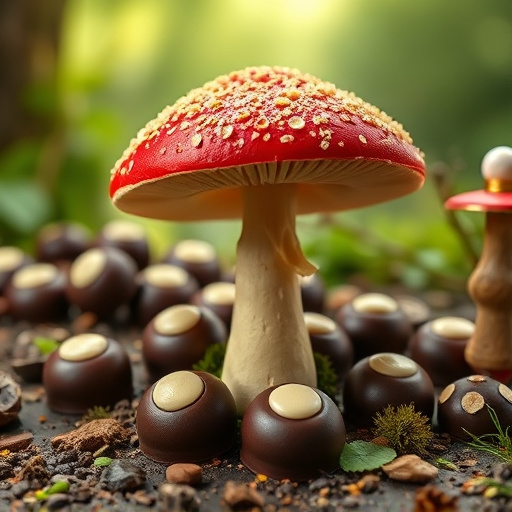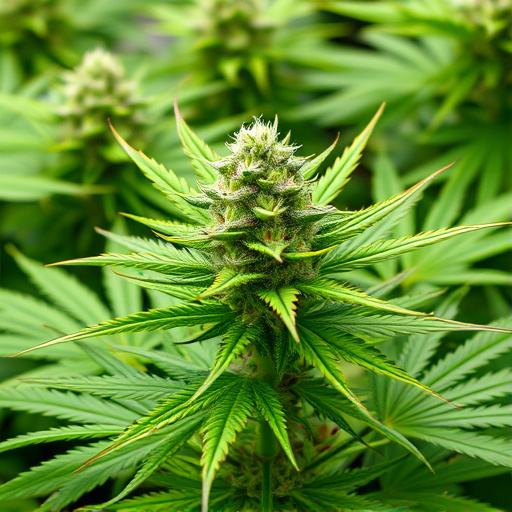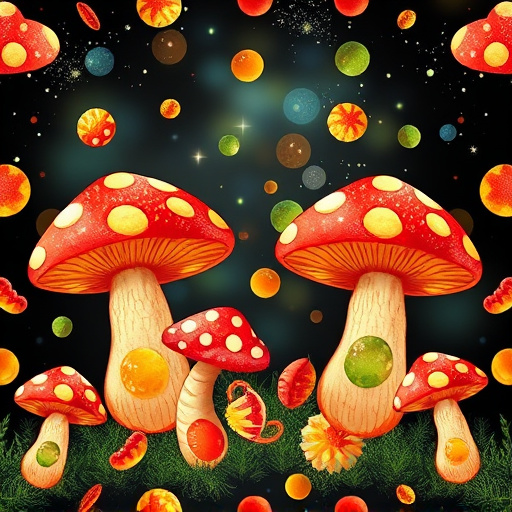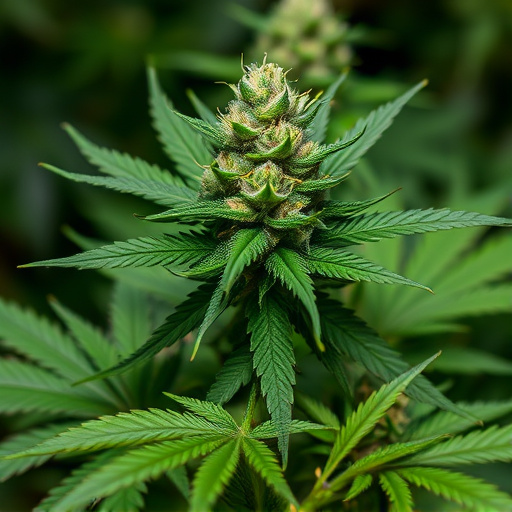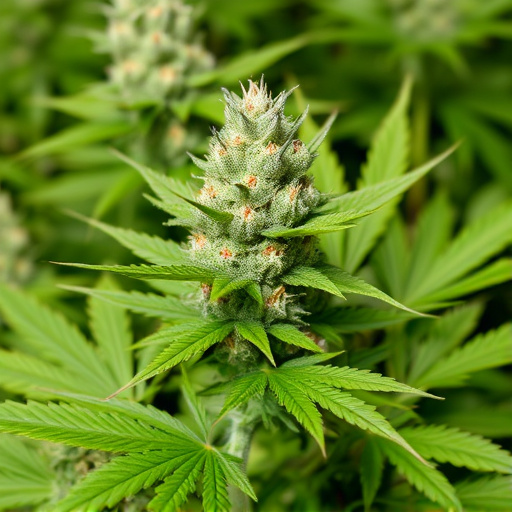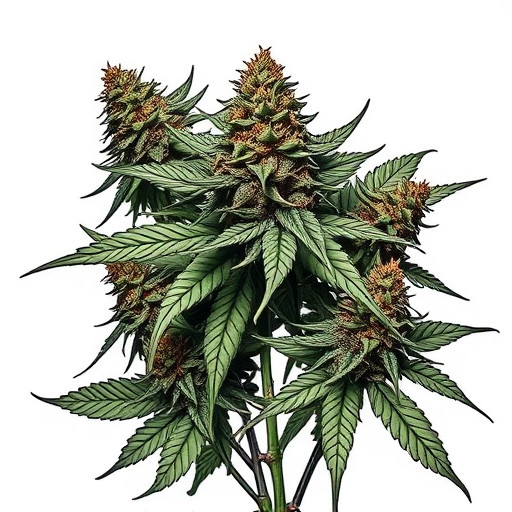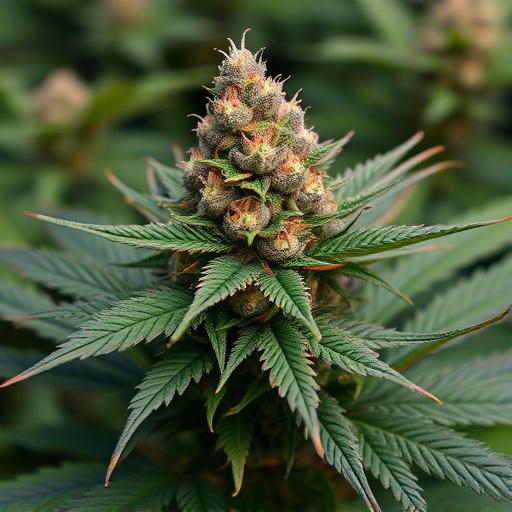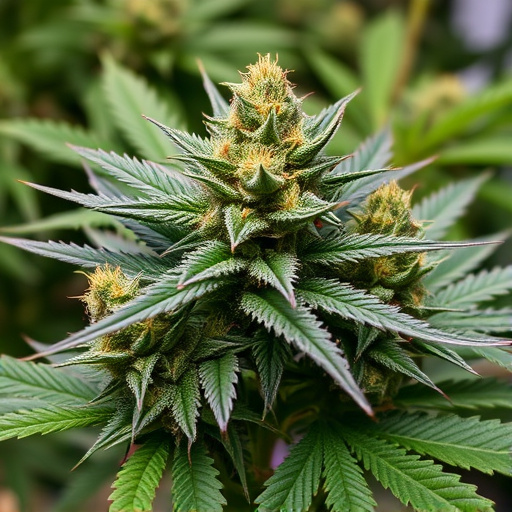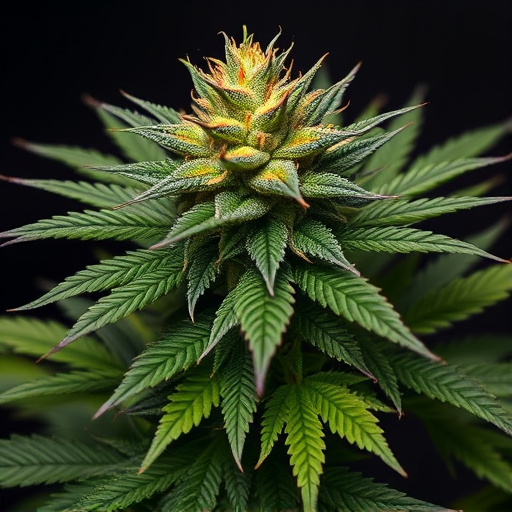The vibrant colors of purple, red, and blue in cannabis plants are primarily driven by genetic variations involving flavonoids like anthocyanins and aromatic terpenes. Indica strains, known for their calming effects, often display these hues due to higher anthocyanin production. Scientific research is uncovering the genetic mechanisms behind pigment changes, inspiring breeding programs to create visually appealing and therapeutically beneficial indica strains. Terpenes, such as myrcene, linalool, and caryophyllene, significantly influence color expression in indica strains, offering potential health benefits like anti-inflammatory properties and calming effects. The interaction between terpenes and cannabinoids enhances cannabis' therapeutic potential, with specific terpene profiles tailored for treating conditions like insomnia or anxiety.
Unraveling the mysteries behind the vibrant hues of purple, red, and blue in weed is a captivating journey into the world of cannabis cultivation. These striking colors are not just aesthetic; they’re a result of intricate interactions between genetics, environment, and cultivation techniques. From the genetic makeup of indica cannabis strains to environmental cues like sunlight exposure and cultivation practices, each factor plays a pivotal role in creating these unique pigmented varieties. Dive into this exploration to discover how nature’s palette is enhanced by human expertise.
- Genetics and Terpenes: The Purple, Red, and Blue Palette
- – Exploring the genetic basis of pigmented cannabis strains
- – Role of terpenes in color expression and potential health benefits
Genetics and Terpenes: The Purple, Red, and Blue Palette
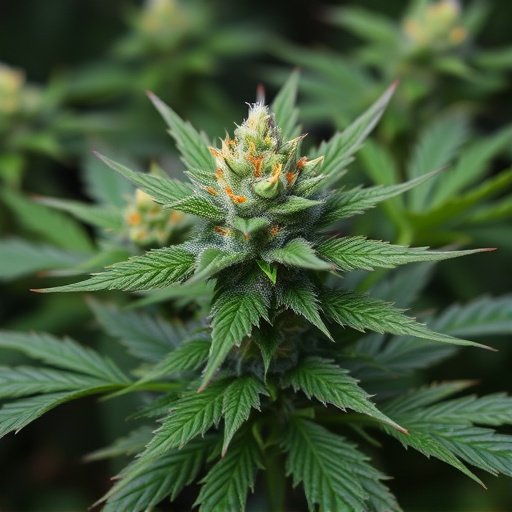
The vibrant purple, red, and blue hues in certain cannabis plants aren’t merely cosmetic; they’re a result of complex interactions between genetics and terpenes. Indica cannabis strains, known for their calming and relaxing effects, often exhibit these colors due to specific genetic modifications that influence pigment production. One key player is the anthocyanin, a type of pigment responsible for red and blue colors in many plants. Certain indica varieties have been bred to produce higher levels of anthocyanins, giving them their distinctive purple and blue shades.
Terpenes, aromatic compounds that contribute to the unique flavors and aromas of cannabis, also play a role. Specific terpenes can enhance or alter the pigmentation of the plant. For instance, myrcene, a common terpene in many indica strains, is known for its earthier notes and can help stabilize anthocyanin production, intensifying the purple and blue colors. This combination of genetic predisposition and terpene profiles creates the captivating palette that defines these purply, red, and blue indica cannabis strains.
– Exploring the genetic basis of pigmented cannabis strains
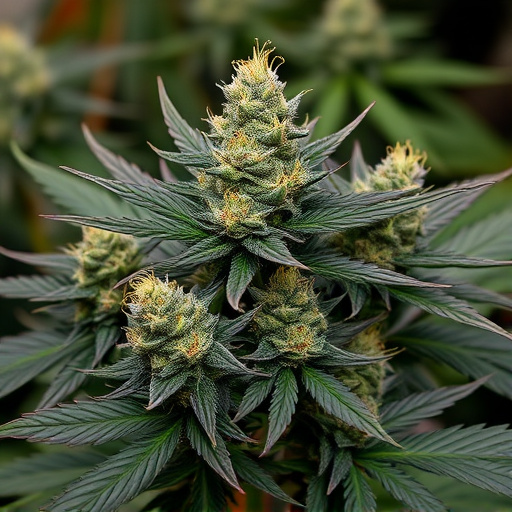
The vibrant colors seen in purple, red, and blue weed are more than just aesthetic; they’re a result of unique genetic variations within the cannabis plant. These distinctive pigmented strains are created through specific combinations of flavonoids and terpenes, which play a crucial role in determining the plant’s visual appeal and potential therapeutic benefits. Indica cannabis strains, known for their relaxing and sedative effects, often showcase these vivid hues due to enhanced production of anthocyanins, a type of flavonoid responsible for blue, purple, and red colors in various plants.
Scientists have begun to unravel the genetic basis behind these pigment variations, identifying specific genes that influence the synthesis of these pigments. This ongoing research not only deepens our understanding of cannabis biology but also opens doors to breeding programs aimed at creating novel strains with enhanced visual characteristics and potentially unique therapeutic properties.
– Role of terpenes in color expression and potential health benefits
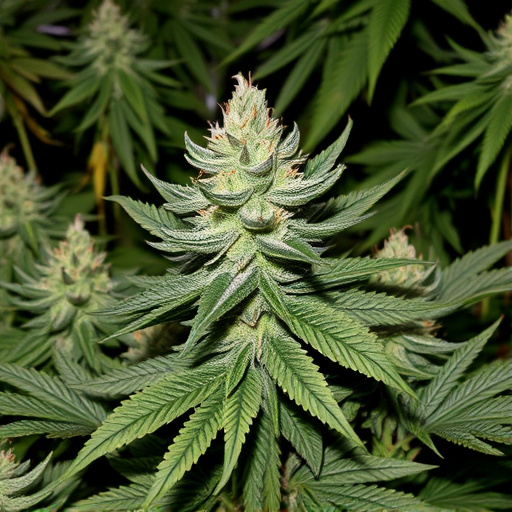
Terpenes, organic compounds responsible for the unique aromas and flavors in many plants, also play a significant role in the color expression of cannabis. These aromatic molecules can influence the plant’s pigment production, leading to vibrant hues like purple, red, and blue. In indica cannabis strains, terpenes such as myrcene, linalool, and caryophyllene are particularly abundant and contribute to these striking colors. Beyond their aesthetic appeal, these terpenes offer potential health benefits, including anti-inflammatory properties and calming effects, making them a subject of interest in the medical marijuana community.
The interaction between terpenes and cannabinoids, like THC and CBD, further enhances the therapeutic potential of cannabis. Certain terpene profiles are associated with specific effects, allowing cultivators to develop strains tailored for various purposes. For instance, high myrcene levels are linked to sedative properties, making it a desirable component in indica-dominant strains aimed at relieving insomnia or reducing anxiety. This intricate relationship between terpenes and the overall cannabis experience highlights the complexity of this remarkable plant.


